The Jersey Giant chicken is ideal if you want to rear a dual-purpose chicken that can double as your pet. This friendly fowl loves to cuddle with their owner and will often sit on your lap for a while.
Created in the late 19th century, the Jersey Giant was bred to replace turkeys as premium table birds.
The breed’s quality has improved and is popular for meat and egg production.
Explore the history, characteristics, and best-rearing practices in this post before you add this beautiful bird to your flock.
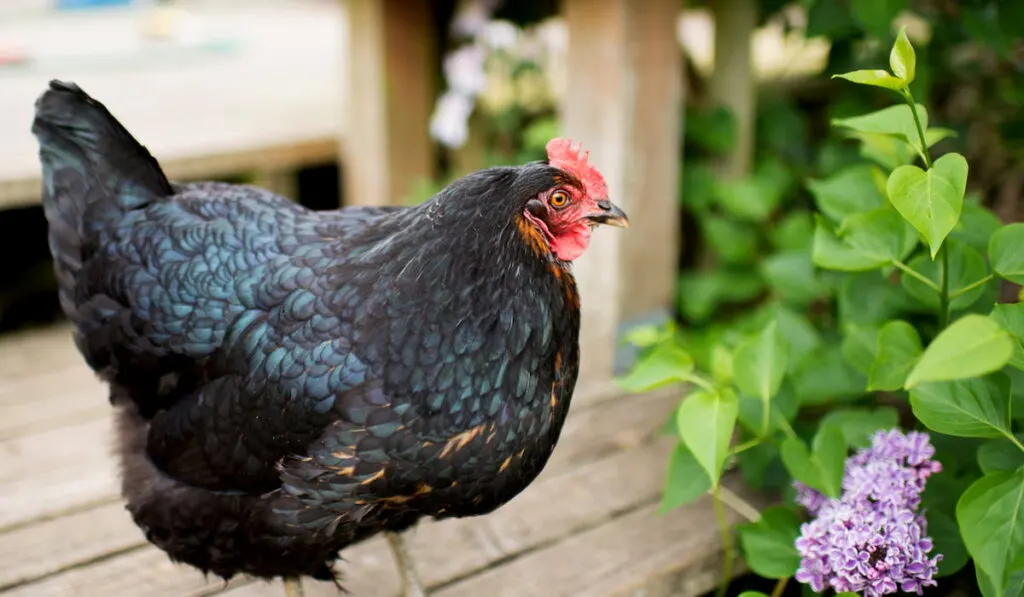
Table of Contents
History
The Jersey Giant chicken breed has its roots in New Jersey, hence its name. John and Thomas Black of Burlington County developed this breed to replace ducks as premium table birds.
The two breeders crossed Black Langshans, Javas, and Dark Brahmas to achieve the desired characteristic giant breed.
They named the offspring’ Black Giants’ to honor their creators. The breed quality improved when Dexter P. of Belmar bred the offspring, giving the chicken a new name, Jersey Giant.
The name Jersey Giant became official in 1921 when the American Association of Jersey Giant Breeders Club surfaced.
In 1922, the American Poultry Association (APA) recognized the black Jersey Giant breed. Later, APA recognized the White and Blue in 1947 and 2003, respectively.
Present-day farmers rear Jersey Giants for white meat, eggs, and pets. Besides, the green sheen of its feathers makes it beautiful and ornamental.
Jersey Giant Standard Appearance
The APA recognizes three Jersey Giant color varieties, Black, White, and Blue.
Appearance
Apart from color, the Giant Jersey varieties have black legs with yellow feet. Each leg has four toes. The Black Giants have a beetle-green sheen which adds to their beauty.
The three varieties have single red combs and red wattles. Their eyes are brown while their beaks are black with a yellow tip.
Jersey giants have no feathering on their legs. The white variety has yellow shanks while the blue ones have dark yellow shanks.
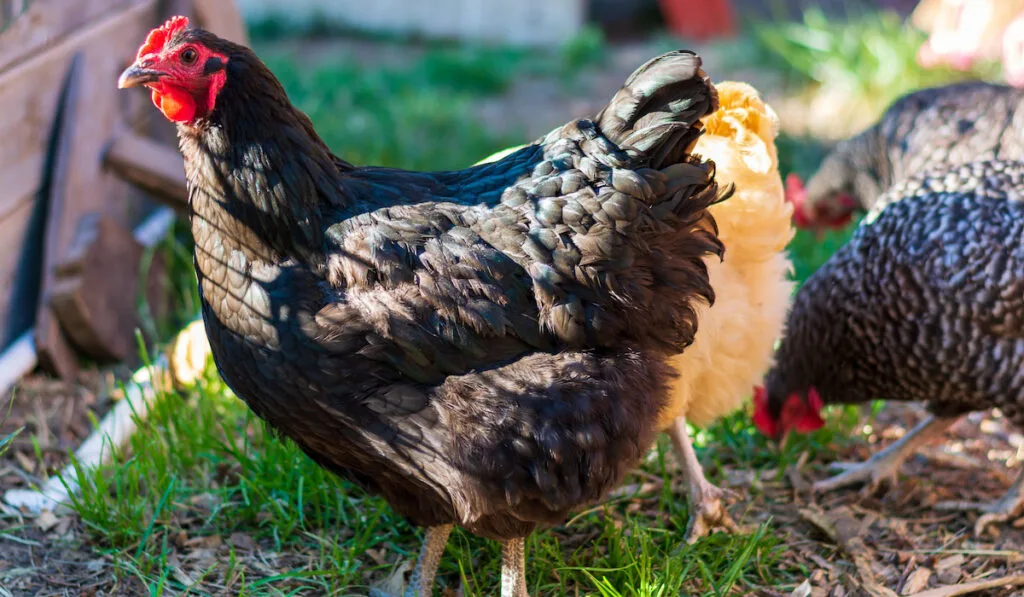
Size
Jersey Giants are extra large-sized. Their maturity rate is commendable, and at eight months, they are mature.
A mature male Jersey Giant weighs 13-15 pounds, while a mature hen weighs about 11 pounds. Bantam roosters weigh 38oz, while their females weigh 34oz.
The male’s mature height is 22-26 inches, while the females are 16-20 inches tall.
Overall, the black variety is slightly taller and heavier than the white and blue.
Their gigantic size suits them for meat production as they produce large capons. They are excellent for roasting when mature.
Egg Color
Jersey Giant hens lay large brown eggs when mature.
The light to medium, brown-shelled eggs may take two days longer to hatch due to their large size.
A Jersey Giant hen’s egg weighs about 1.94-2.11oz.
Colors
The APA recognizes three Jersey Giant color varieties.
- Black. Registered in 1922, it has black legs with four toes on each and a black shank. Some black varieties have white specks.
- White. Registered in 1947, this variety has black legs with four toes on each and a yellow shank.
- Blue. Registered in 2003, this variety has black legs with four toes on each and a dark Willow shank.
Temperament
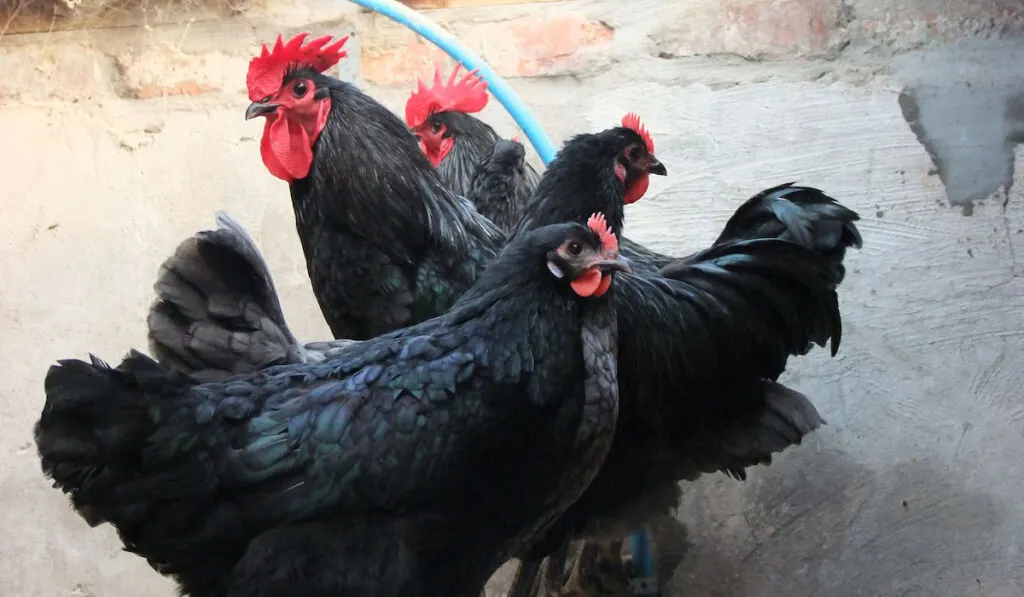
Jersey Giants have a gentle temperament. You can call them gentle giants due to their body size and gentle personality.
They shy away from disputes if you put them in a mixed flock. However, other breeds rarely bully them, thanks to their intimidating size.
Farmers have commented on their high-level tolerance to other breeds, including roosters.
Although the breed hardly flies due to their large bodies, they can jump over low fences when needed.
When it comes to foraging, the friendly Giants are great. Maybe their great appetite drives them.
Noise Level
Jersey Giant chickens are noisy and, therefore, not ideal if you have close neighbors or are in an urban set-up. They require plenty of grazing area, which makes them thrive in rural areas.
Lifespan
Jersey Giants’ lifespan exceeds eight years when you feed and take good care of them. However, they can die early from health issues and poor nutrition.
Uses
Jersey Giants are known for meat and egg production. A mature hen lays 2-4 eggs per week, which totals 150-200 eggs yearly.
Due to their large size, they are suitable for meat production. People like to roast Jersey Giants, and there is plenty for a meal.
You can also rear them for ornamental purposes because of their beautiful sheen and friendly personality.
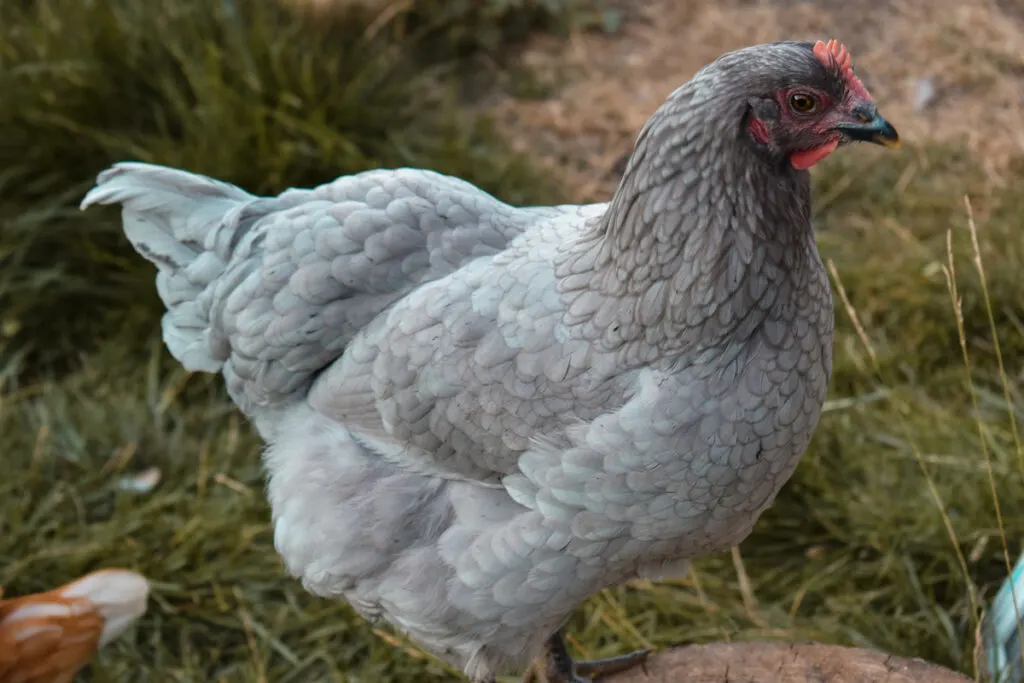
Hatching and Raising
Hatching Jersey Giant eggs comes with challenges. The breed’s hens are not naturally broody and may take a long time before they show brooding signs.
Another challenge is their egg-breaking habit.
However, a Jersey hen has excellent mother traits when they decide to sit on their eggs.
The great thing is that you can coerce the hens to brood by raising them with more broody varieties.
If you practice commercial poultry, you can use an incubator and hatch the eggs within 22-24 days.
Unlike the smaller eggs, which hatch after 21 days, the Jersey Giant eggs take longer because of their size.
Feeding
The Jersey Giant is a dual-purpose chicken and therefore requires good feeding. You should give them food rich in vitamins and minerals.
The above nutrients are essential to body development and bone formation. Their large bodies require strong bones lest they develop bone and muscle weakness.
The feed for chicks should have plenty of proteins to enhance body development. 18-20% protein works well.
As the chicken matures, you can lower the protein and increase the vitamins and minerals for healthy bodies and quality eggs.
Remember to include a separate oyster shell container for your chickens and plenty of clean water. The oyster shells are calcium-rich and help in eggshell formation.
Allowing your Jersey Giant flock to roam around and forage is very beneficial. They get essential minerals and other nutrients from the soil.
Besides, they can get grit on their own if they are free-range regularly.
Note that this breed’s food ratio is higher than other breeds, and you may spend more feeding them before harvest.
Housing
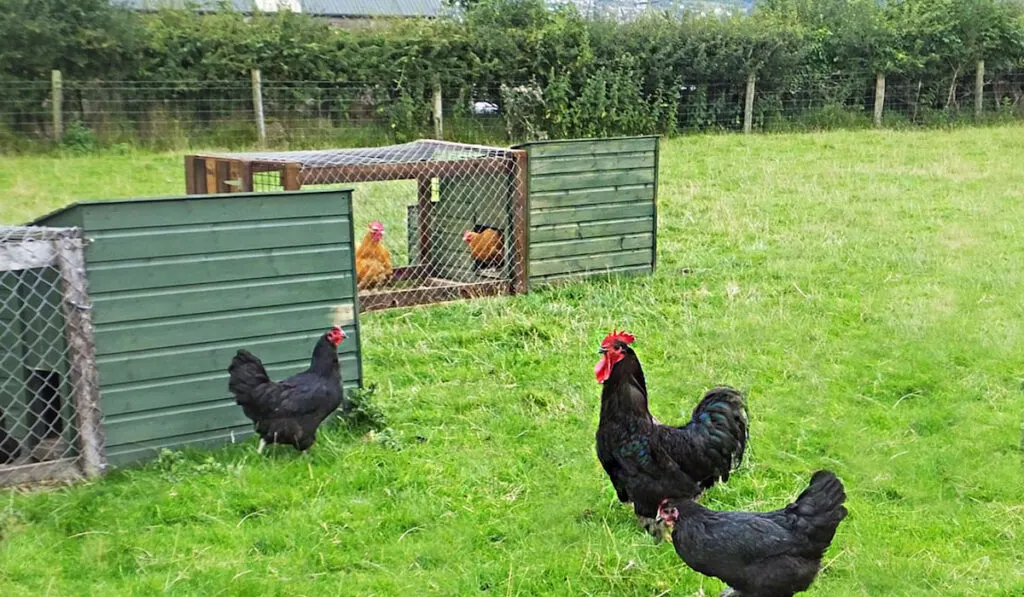
Jersey Giant chickens are large and therefore require more coop space. 6-8 square feet of coop space is required per bird. In the run area, each bird requires 25-30 square feet.
Fix the perches near the ground because the breed cannot fly high. Besides, the birds can hurt their legs while jumping to the ground if the perch is too high.
Make large nesting boxes to keep your hens comfortable while laying and brooding.
Health Issues
Jersey Giants are healthy birds not prone to many diseases. However, leg and face injuries are common among them.
The injuries occur when the birds jump from high places to the ground. Due to their weight, they get injured while landing.
Cold Tolerance
Jersey Giants are moderately hardy and cold-tolerant. They do well in cold weather.
Heat Tolerance
The breed has poor heat tolerance. They do not fare well in hot areas.
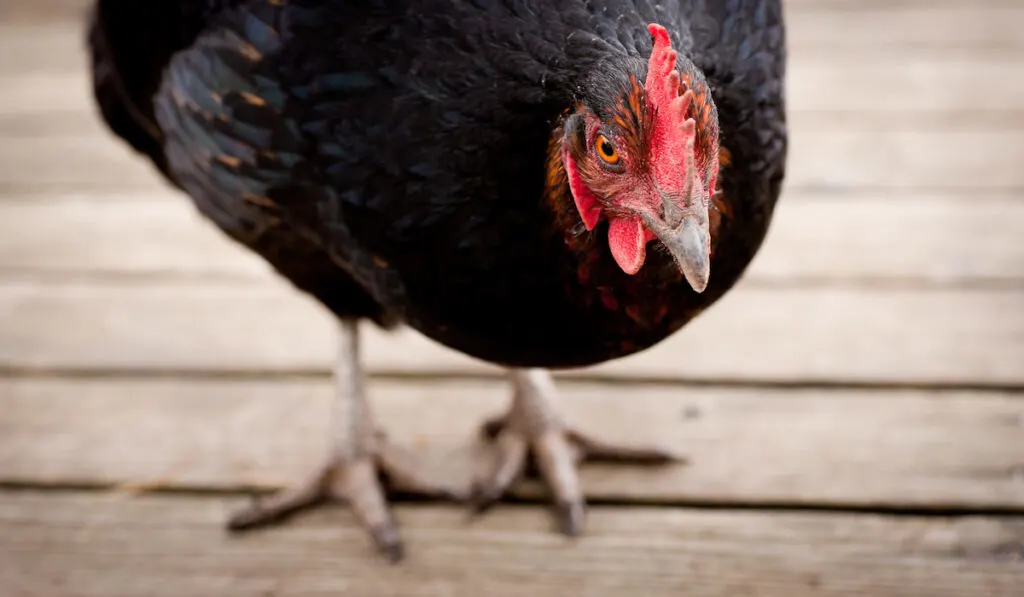
Where to Buy Jersey Giants and Price
The Jersey Giant is a common poultry breed in the US. Getting a few heads for your flock is simple.
You can visit a chicken farm near you and place your order for the number of Jersey Giant chickens you want. But if you have a tight schedule, visit an online store and they will deliver the chicks to you.
Pricing varies from one store to another.
The following table summarizes pricing from one of the stores.
| Sex | Price per chicken |
| Straight run | $4.06 |
| Male | $3.12 |
| Female | $4.80 |
The price, however, varies with quantity. Many farms and hatcheries offer cheaper prices for large orders.
You may incur shipping costs depending on the distance.
Final Thoughts
The Jersey Giant breed is a popular dual-purpose chicken. Its docile temperament makes it ideal for everyone.
Whether you are a seasoned poultry farmer or a beginner, the breed is right for you.
Its friendly nature allows children to handle it, making it the perfect family bird. Moreover, its beauty attracts them while its friendliness makes it a great pet.
However, be ready to spend more on food because the breed’s nutritional requirements are higher when compared to other breeds.
Resources
- https://breeds.okstate.edu/poultry/chickens/jersey-giant-chickens.html
- https://livestockconservancy.org/heritage-breeds/heritage-breeds-list/jersey-giant-chicken/
- https://www.chickensandmore.com/jersey-giant/
- https://www.thehappychickencoop.com/jersey-giant/
- https://www.jrpiercefamilyfarm.com/blog-1/2020/06/16/how-to-raise-jersey-giant-chickens
- https://chickenjournal.com/best-chicken-vitamin-supplements/
- https://cs-tf.com/jersey-giant-chicken/bird
